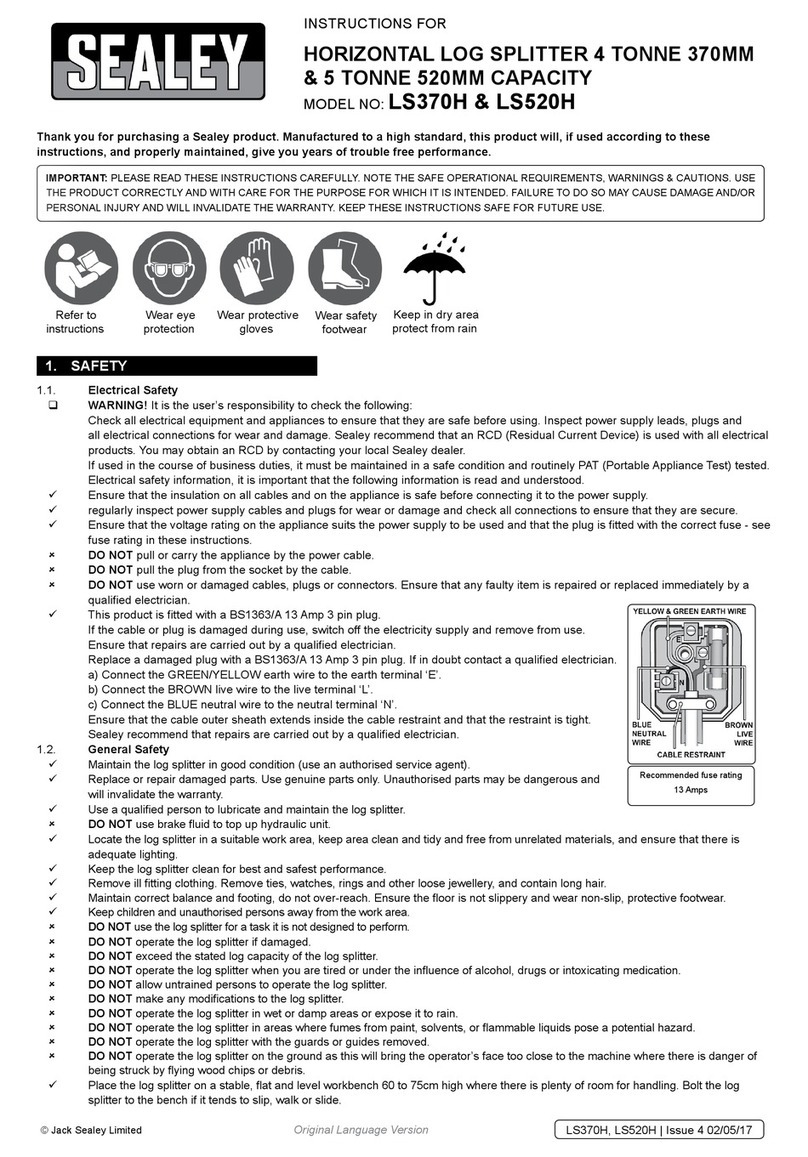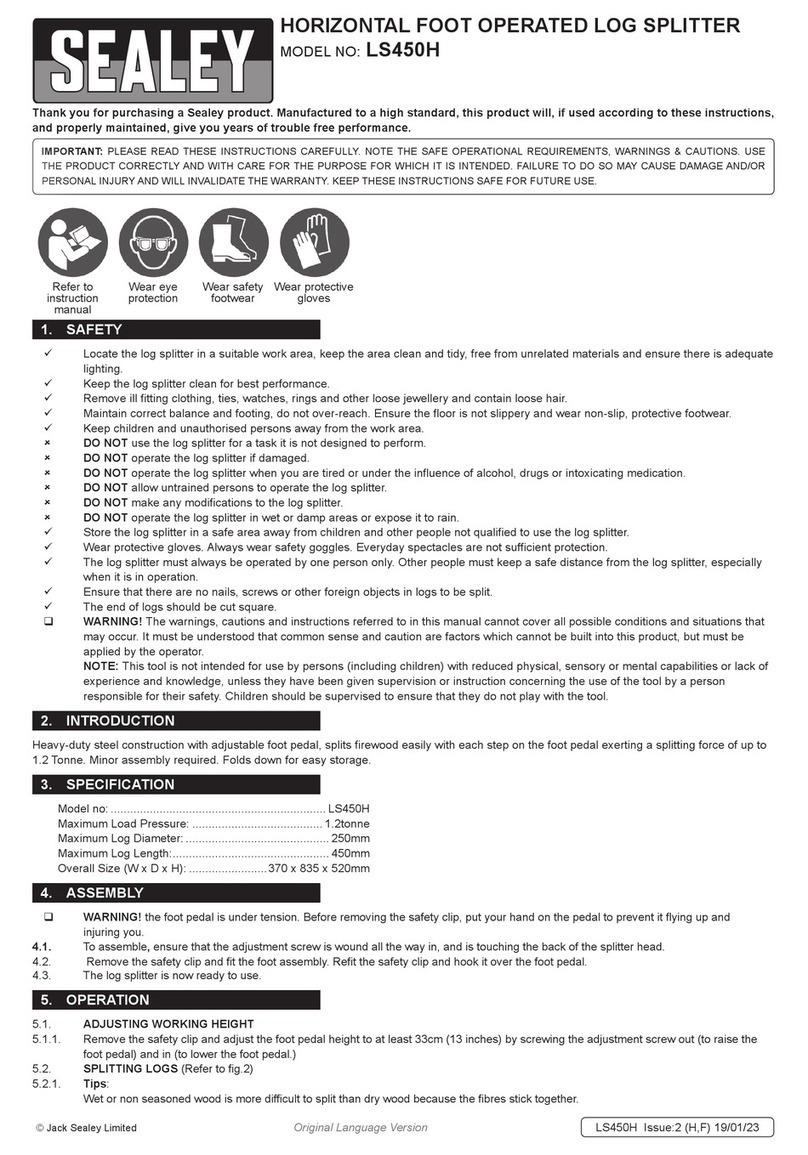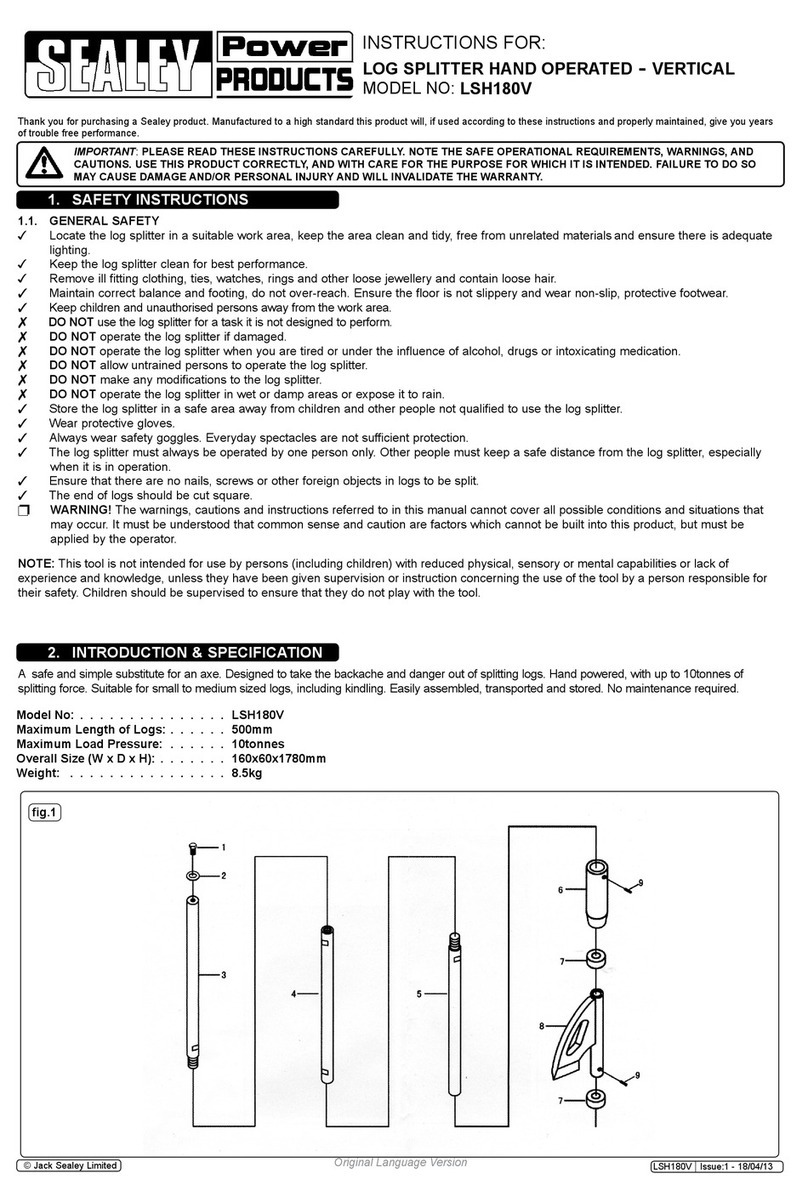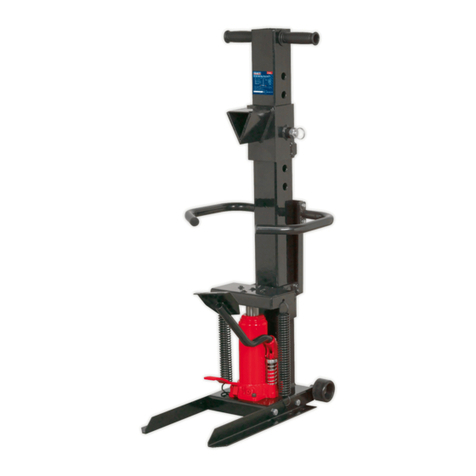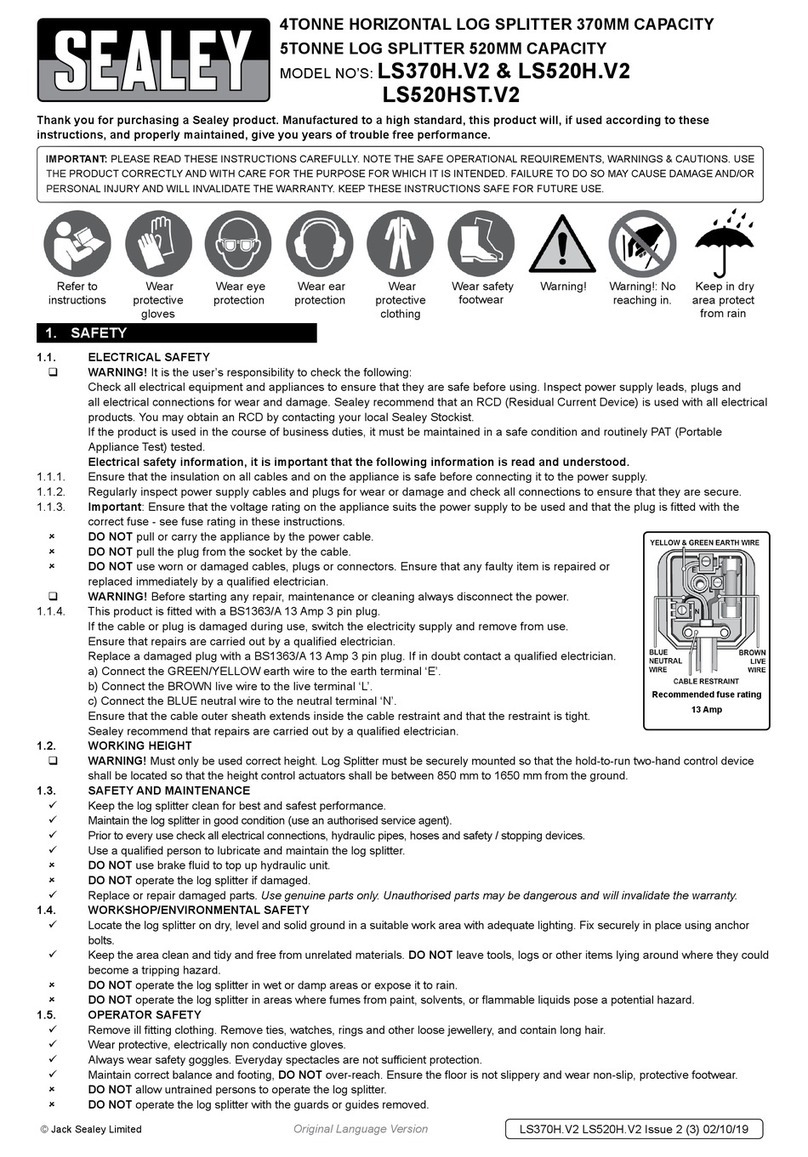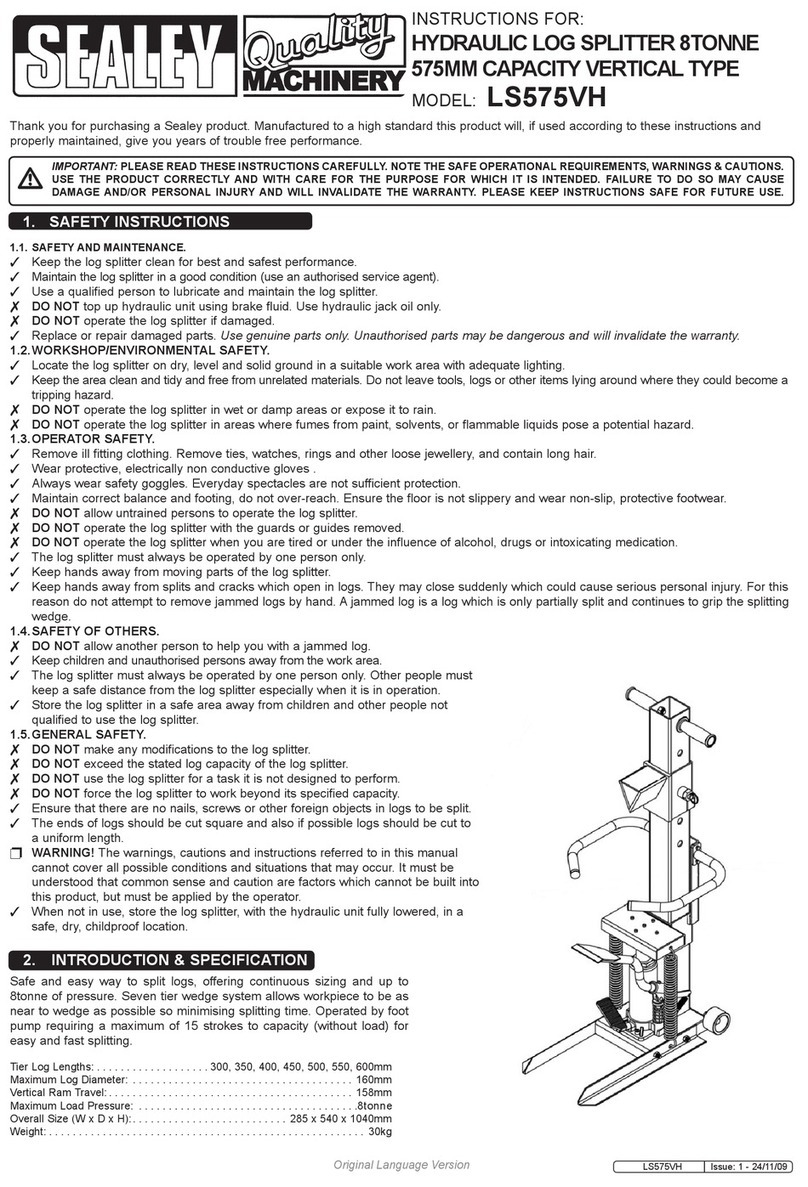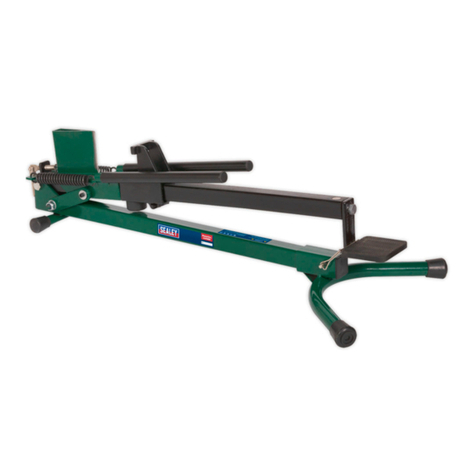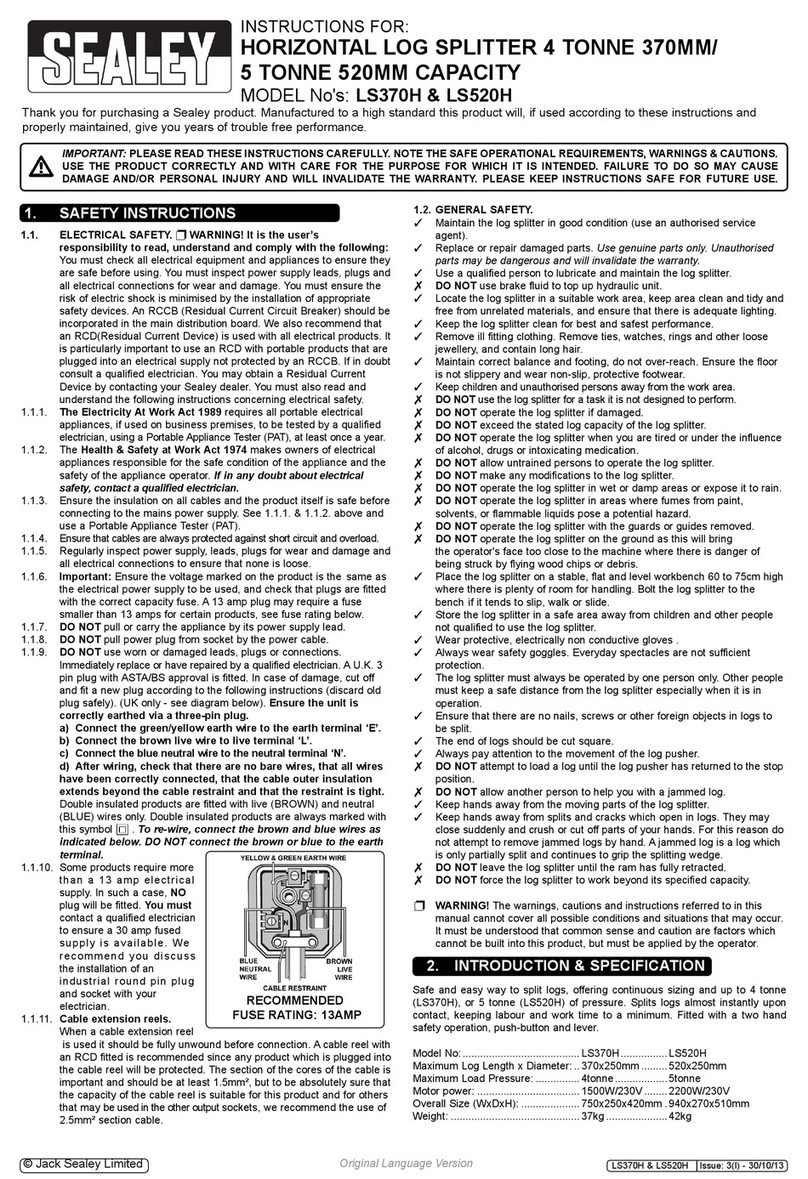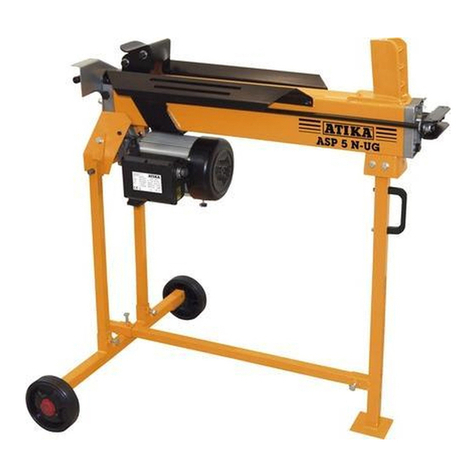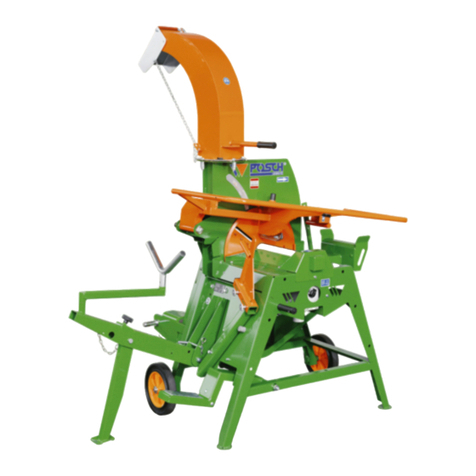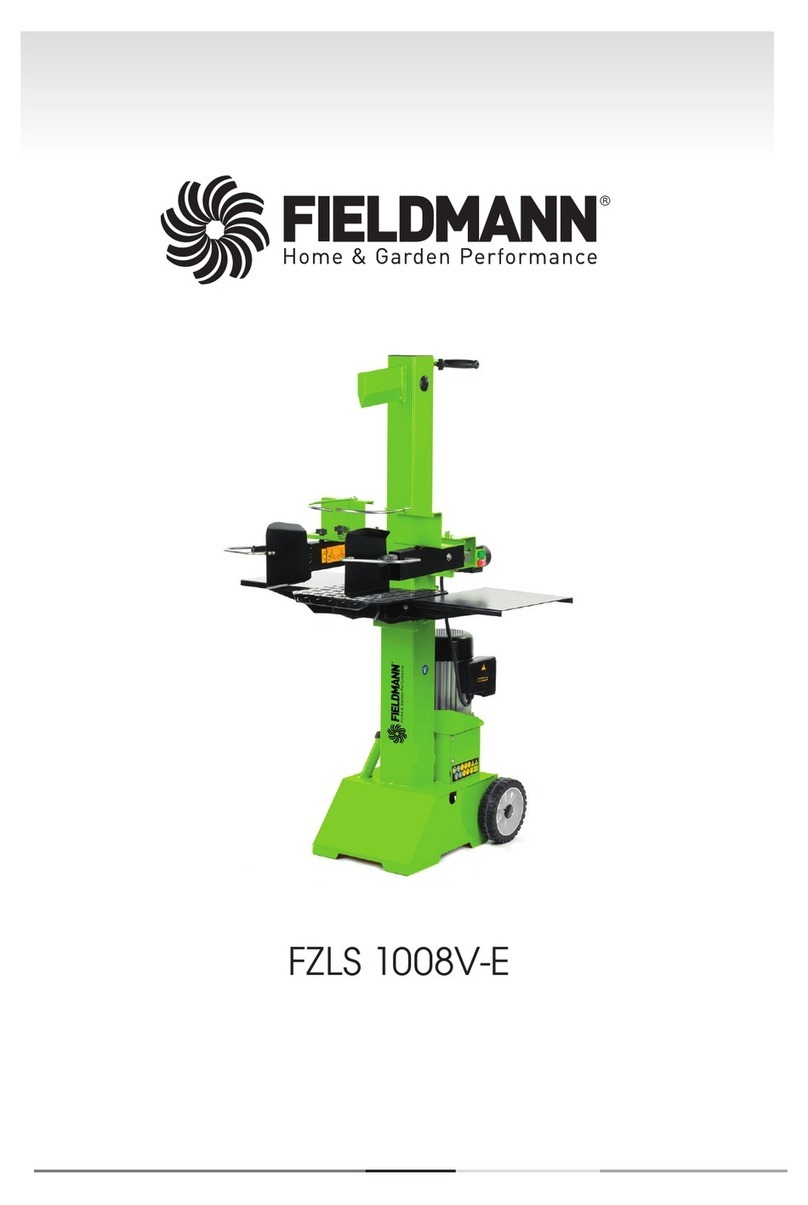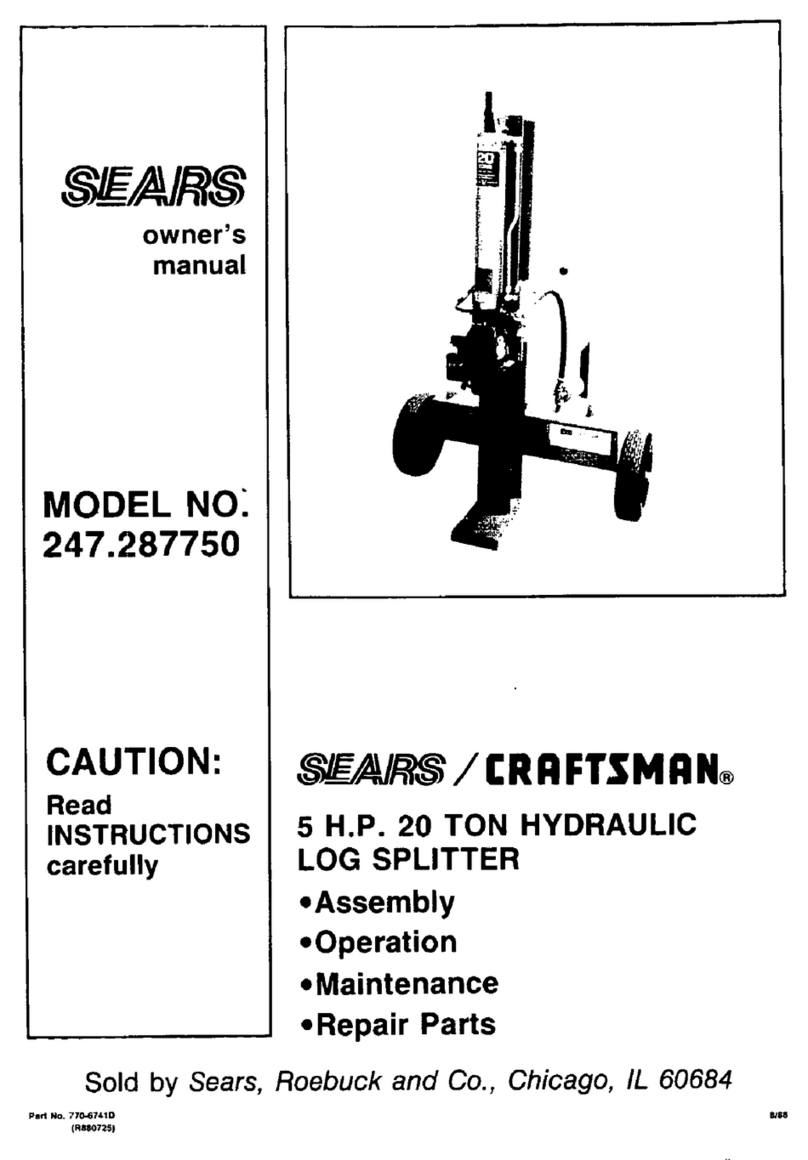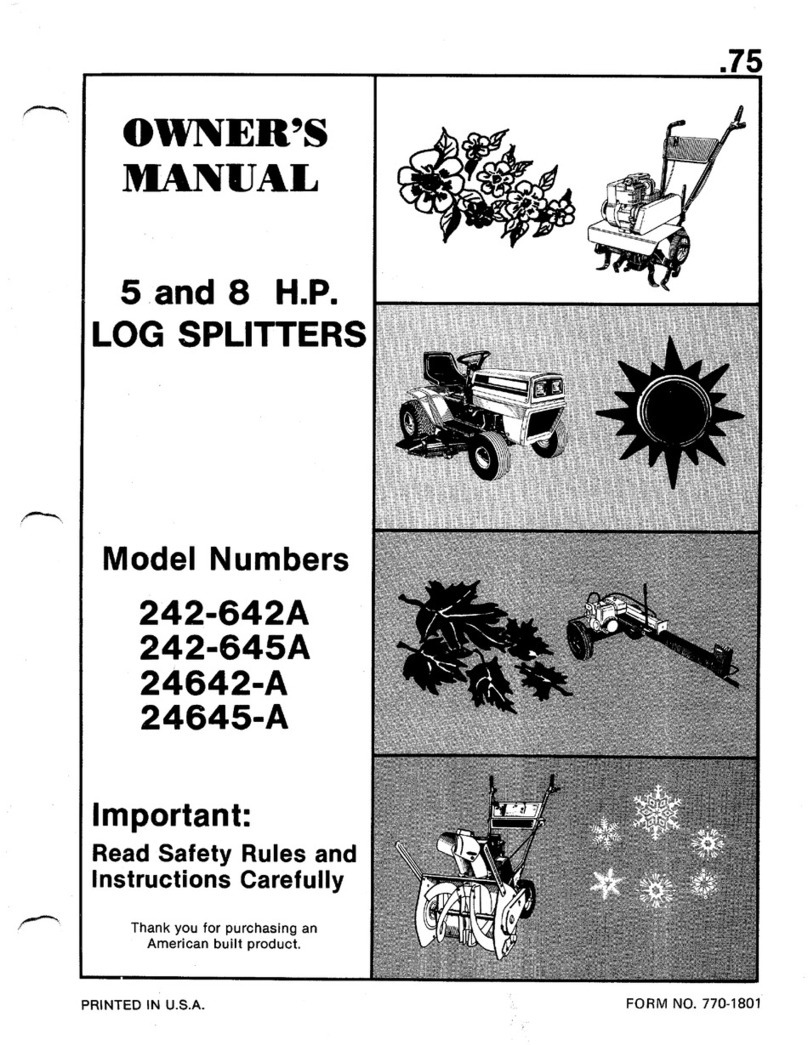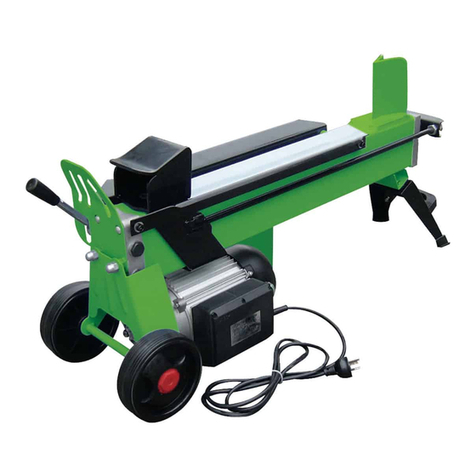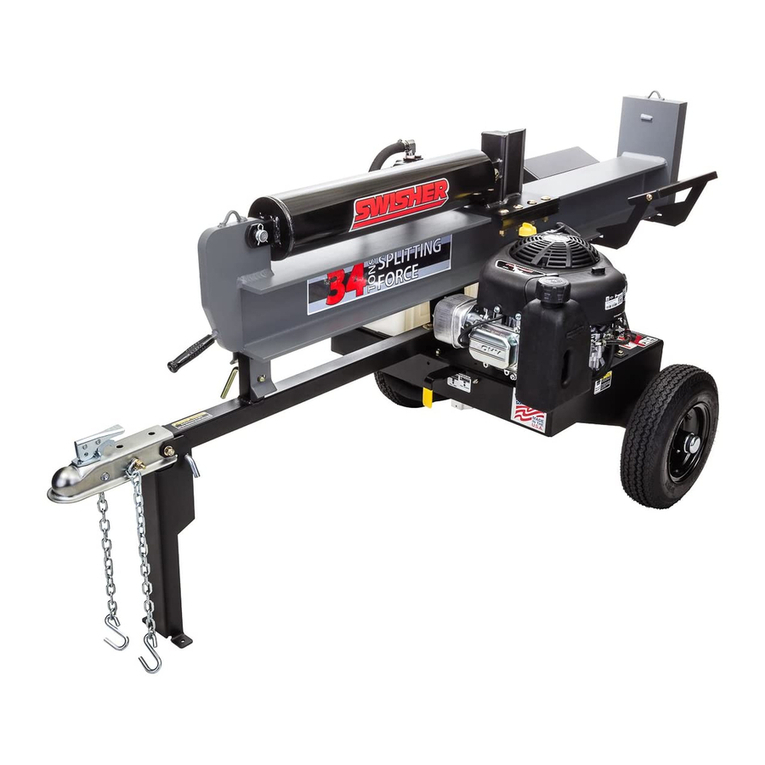
5.5 TON LOG SPLITTER 1050MM CAPACITY
MODEL NO: LS1050V
Thank you for purchasing a Sealey product. Manufactured to a high standard, this product will, if used according to these
instructions, and properly maintained, give you years of trouble free performance.
IMPORTANT: PLEASE READ THESE INSTRUCTIONS CAREFULLY. NOTE THE SAFE OPERATIONAL REQUIREMENTS, WARNINGS & CAUTIONS. USE
THE PRODUCT CORRECTLY AND WITH CARE FOR THE PURPOSE FOR WHICH IT IS INTENDED. FAILURE TO DO SO MAY CAUSE DAMAGE AND/OR
PERSONAL INJURY AND WILL INVALIDATE THE WARRANTY. KEEP THESE INSTRUCTIONS SAFE FOR FUTURE USE.
1. SAFETY
1.1. ELECTRICAL SAFETY
WARNING! It is the user’s responsibility to check the following:
Check all electrical equipment and appliances to ensure that they are safe before using. Inspect power supply leads, plugs and
all electrical connections for wear and damage. Sealey recommend that an RCD (Residual Current Device) is used with all electrical
products. You may obtain an RCD by contacting your local Sealey dealer.
If the product is used in the course of business duties, it must be maintained in a safe condition and routinely PAT (Portable
Appliance Test) tested.
Electrical safety information, it is important that the following information is read and understood.
1.1.1. Ensure that the insulation on all cables and on the appliance is safe before connecting it to the power supply.
1.1.2. Regularly inspect power supply cables and plugs for wear or damage and check all connections to ensure that they are secure.
1.1.3. Important: Ensure that the voltage rating on the appliance suits the power supply to be used and that the plug is tted with the
correct fuse - see fuse rating in these instructions.
8DO NOT pull or carry the appliance by the power cable.
8DO NOT pull the plug from the socket by the cable.
8DO NOT use worn or damaged cables, plugs or connectors. Ensure that any faulty item is repaired or is
replaced immediately by a qualied electrician.
1.1.4. This product is tted with a BS1363/A 13 Amp 3 pin plug.
If the cable or plug is damaged during use, switch the electricity supply and remove from use.
Ensure that repairs are carried out by a qualied electrician.
Replace a damaged plug with a BS1363/A 13 Amp 3 pin plug. If in doubt contact a qualied electrician.
a) Connect the GREEN/YELLOW earth wire to the earth terminal ‘E’.
b) Connect the BROWN live wire to the live terminal ‘L’.
c) Connect the BLUE neutral wire to the neutral terminal ‘N’.
Ensure that the cable outer sheath extends inside the cable restraint and that the restraint is tight.
Sealey recommend that repairs are carried out by a qualied electrician.
1.2. SAFETY AND MAINTENANCE.
9Keep the log splitter clean for best and safest performance.
9Maintain the log splitter in good condition (use an authorised service agent).
9 Use a qualified person to lubricate and maintain the log splitter.
8DO NOT use brake fluid to top up hydraulic unit.
8DO NOT operate the log splitter if damaged.
9Replace or repair damaged parts. Use genuine parts only. Unauthorised parts may be dangerous and will invalidate the warranty.
1.3. WORKSHOP/ENVIRONMENTAL SAFETY.
9Locate the log splitter on dry, level and solid ground in a suitable work area with adequate lighting.
9Keep the area clean and tidy and free from unrelated materials. DO NOT leave tools, logs or other items lying around where they could
become a tripping hazard.
8DO NOT operate the log splitter in wet or damp areas or expose it to rain.
8DO NOT operate the log splitter in areas where fumes from paint, solvents, or flammable liquids pose a potential hazard.
1.4. OPERATOR SAFETY.
9Remove ill fitting clothing. Remove ties, watches, rings and other loose jewellery, and contain long hair.
9 Wear protective, electrically non conductive gloves .
9Always wear safety goggles. Everyday spectacles are not sufficient protection.
9Maintain correct balance and footing, DO NOT over-reach. Ensure the floor is not slippery and wear non-slip, protective footwear.
8DO NOT allow untrained persons to operate the log splitter.
8DO NOT operate the log splitter with the guards or guides removed.
8DO NOT operate the log splitter when you are tired or under the influence of alcohol, drugs or intoxicating medication.
8DO NOT attempt to load a log until the log pusher has returned to the stop position.
9Stay alert and always pay attention to the movement of the log pusher.
9The log splitter must always be operated by one person only.
9Keep hands away from the moving parts of the log splitter.
9Keep hands away from splits and cracks which open in logs. They may close suddenly and crush or cut off parts of your hands.
Recommended fuse rating
13 Amp
LS1050V Issue 3 (HF) 25/06/18
Original Language Version
© Jack Sealey Limited
Refer to
instructions
Wear eye
protection
Wear protective
gloves
Wear safety
footwear
Warning
crushing of
hands
Warning
